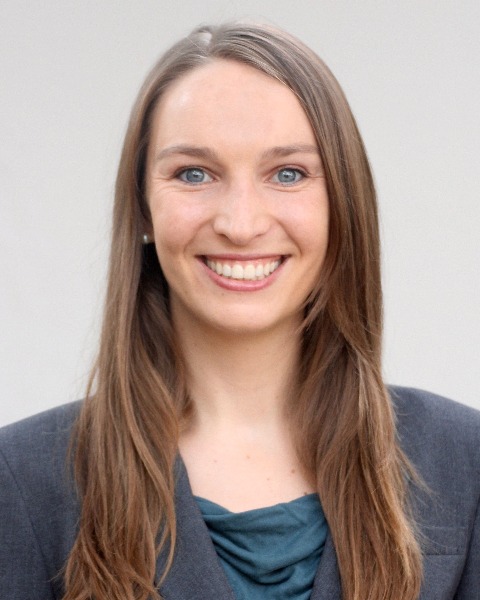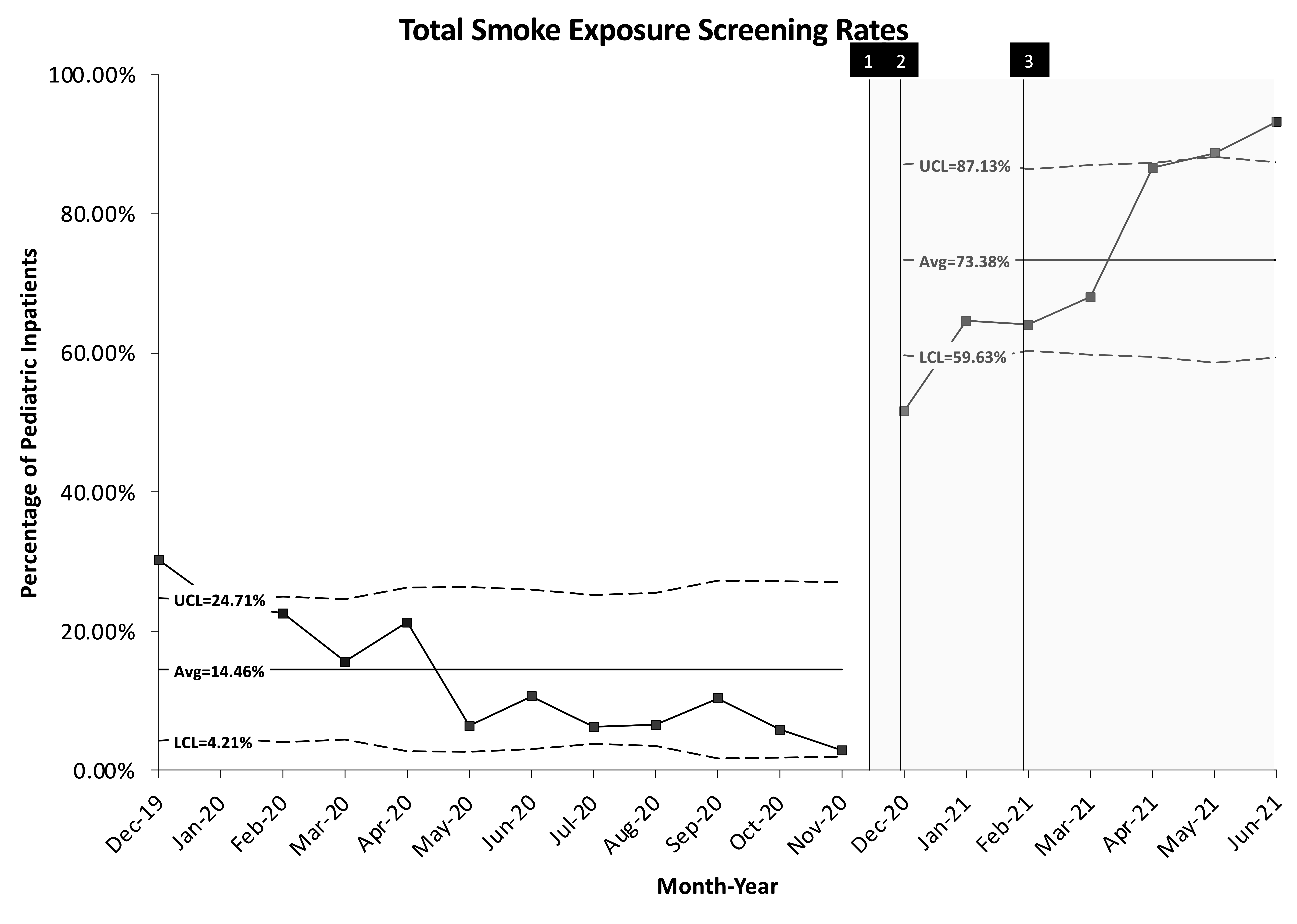Hospital Medicine: Hospital Medicine Quality Improvement
Category: Abstract Submission
Hospital Medicine: QI
333 - Increasing pediatric smoke exposure screening, education, and referral at a community hospital through quality improvement
Sunday, April 24, 2022
3:30 PM - 6:00 PM US MT
Poster Number: 333
Publication Number: 333.323
Publication Number: 333.323
Emily Daniel, Sutter Health, Sacramento, CA, United States; Lancy Lu, Kaiser Permanente, Elk Grove, CA, United States; Michelle Y. Hamline, University of California Davis, Sacramento, CA, United States; Mina Tahai, University of California Davis Children's Hospital, Sacramento, CA, United States; Arvinder K. Thiara, UC Davis, Lodi, CA, United States; Rosemary Nunez-Davis, Community Medical Centers, Elk Grove, CA, United States; Maggie Q. Sommers, UC Davis Health, Sacramento, CA, United States

Emily Daniel, MD
Pediatric Hospitalist
Sutter Health
Sacramento, California, United States
Presenting Author(s)
Background: Tobacco use is the leading cause of preventable disease, disability, and death in the United States, while secondhand smoke exposure increases pediatric ear and respiratory infections, asthma exacerbations, and risk of Sudden Unexpected Infant Death. Inpatient hospital admissions, whether for the birth of a new baby or for a child’s acute illness, are often considered prime opportunities for healthcare providers to help incite positive behavior change. However, in our community hospital setting, relatively few pediatric inpatients were screened for smoke exposure at baseline, and even fewer were provided with smoking cessation education or other resources.
Objective: In our community hospital setting, we sought to increase smoke exposure screening rates to at least 90% of all admitted pediatric patients, increase smoking cessation education to at least 70%, and increase CA Smokers' Helpline referrals to at least 5% of patients/caregivers screening positive for smoke exposure, all within a seven-month period.
Design/Methods: All pediatric ward, newborn nursery, and Level II nursery admissions were eligible. A root cause analysis was performed to identify opportunities for improvement. Interventions included the following: monthly education on smoke exposure screening and Helpline referrals, standardizing documentation for screening and discharge instructions, visual reminders, and Helpline wallet cards. The primary outcome measure was the monthly percentage of patients screened for smoke exposure. Secondary outcomes were the percentage of patients/caregivers screening positive for smoke exposure who received smoking cessation discharge instructions or who received a CA Smokers' Helpline referral for smoking cessation resources. Length of stay was monitored as a balancing measure. Outcome measures were analyzed with statistical process control in SPC for Excel. Baseline and intervention periods for LOS were compared with t-tests.
Results: In seven months, we increased baseline average smoke exposure screening rates from 14% to 73%, meeting criteria for special cause variation (Figure 1). Receipt of smoking cessation discharge instructions increased from 5% to 57% (Figure 2). Helpline referrals increased from 0% to 21% (Figure 3). There was no significant change in length of stay.Conclusion(s): Pediatrician-led smoking cessation interventions are feasible and effective in community hospital pediatric units with no significant impact on length of stay.
Total Smoke Exposure Screening Rates Vertical lines are timing of interventions. 1) Monthly Pediatrician education started 2) EMR documentation standardized, visual reminders posted 3) Helpline wallet cards available.
Vertical lines are timing of interventions. 1) Monthly Pediatrician education started 2) EMR documentation standardized, visual reminders posted 3) Helpline wallet cards available.
UCL= Upper Control Limit, Avg= Average, LCL= Lower Control Limit
Baseline: Dec 2019-Nov 2020. Intervention: Dec 2020-June 2021
Percentage of Positive Screens Receiving Written Discharge Instructions Vertical lines are timing of interventions. 1) Monthly Pediatrician education started 2) EMR documentation standardized, visual reminders posted 3) Helpline wallet cards available.
Vertical lines are timing of interventions. 1) Monthly Pediatrician education started 2) EMR documentation standardized, visual reminders posted 3) Helpline wallet cards available.
UCL= Upper Control Limit, Avg= Average
Baseline: Dec 2019-Nov 2020. Intervention: Dec 2020-June 2021
Objective: In our community hospital setting, we sought to increase smoke exposure screening rates to at least 90% of all admitted pediatric patients, increase smoking cessation education to at least 70%, and increase CA Smokers' Helpline referrals to at least 5% of patients/caregivers screening positive for smoke exposure, all within a seven-month period.
Design/Methods: All pediatric ward, newborn nursery, and Level II nursery admissions were eligible. A root cause analysis was performed to identify opportunities for improvement. Interventions included the following: monthly education on smoke exposure screening and Helpline referrals, standardizing documentation for screening and discharge instructions, visual reminders, and Helpline wallet cards. The primary outcome measure was the monthly percentage of patients screened for smoke exposure. Secondary outcomes were the percentage of patients/caregivers screening positive for smoke exposure who received smoking cessation discharge instructions or who received a CA Smokers' Helpline referral for smoking cessation resources. Length of stay was monitored as a balancing measure. Outcome measures were analyzed with statistical process control in SPC for Excel. Baseline and intervention periods for LOS were compared with t-tests.
Results: In seven months, we increased baseline average smoke exposure screening rates from 14% to 73%, meeting criteria for special cause variation (Figure 1). Receipt of smoking cessation discharge instructions increased from 5% to 57% (Figure 2). Helpline referrals increased from 0% to 21% (Figure 3). There was no significant change in length of stay.Conclusion(s): Pediatrician-led smoking cessation interventions are feasible and effective in community hospital pediatric units with no significant impact on length of stay.
Total Smoke Exposure Screening Rates
 Vertical lines are timing of interventions. 1) Monthly Pediatrician education started 2) EMR documentation standardized, visual reminders posted 3) Helpline wallet cards available.
Vertical lines are timing of interventions. 1) Monthly Pediatrician education started 2) EMR documentation standardized, visual reminders posted 3) Helpline wallet cards available.UCL= Upper Control Limit, Avg= Average, LCL= Lower Control Limit
Baseline: Dec 2019-Nov 2020. Intervention: Dec 2020-June 2021
Percentage of Positive Screens Receiving Written Discharge Instructions
 Vertical lines are timing of interventions. 1) Monthly Pediatrician education started 2) EMR documentation standardized, visual reminders posted 3) Helpline wallet cards available.
Vertical lines are timing of interventions. 1) Monthly Pediatrician education started 2) EMR documentation standardized, visual reminders posted 3) Helpline wallet cards available.UCL= Upper Control Limit, Avg= Average
Baseline: Dec 2019-Nov 2020. Intervention: Dec 2020-June 2021
